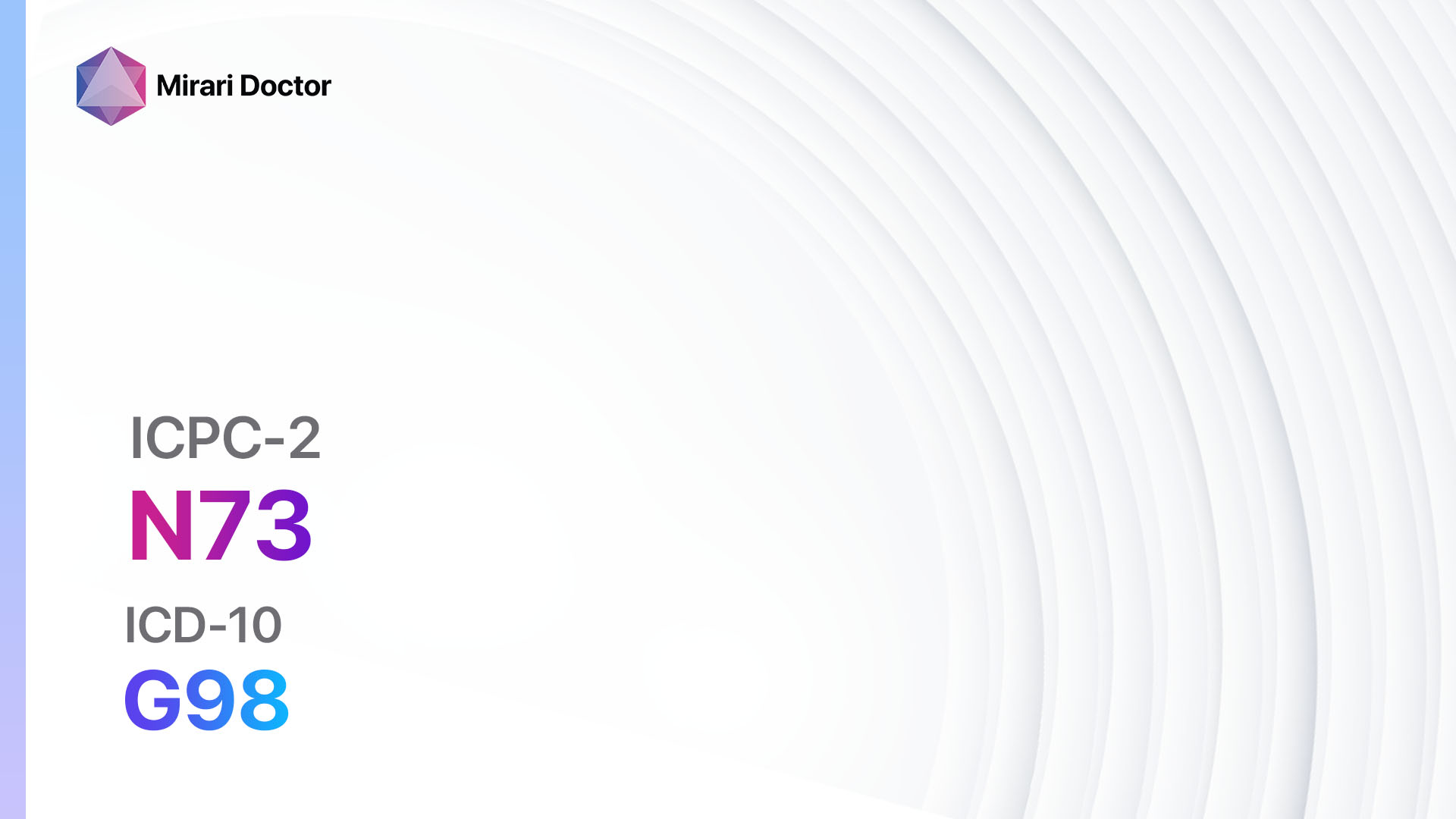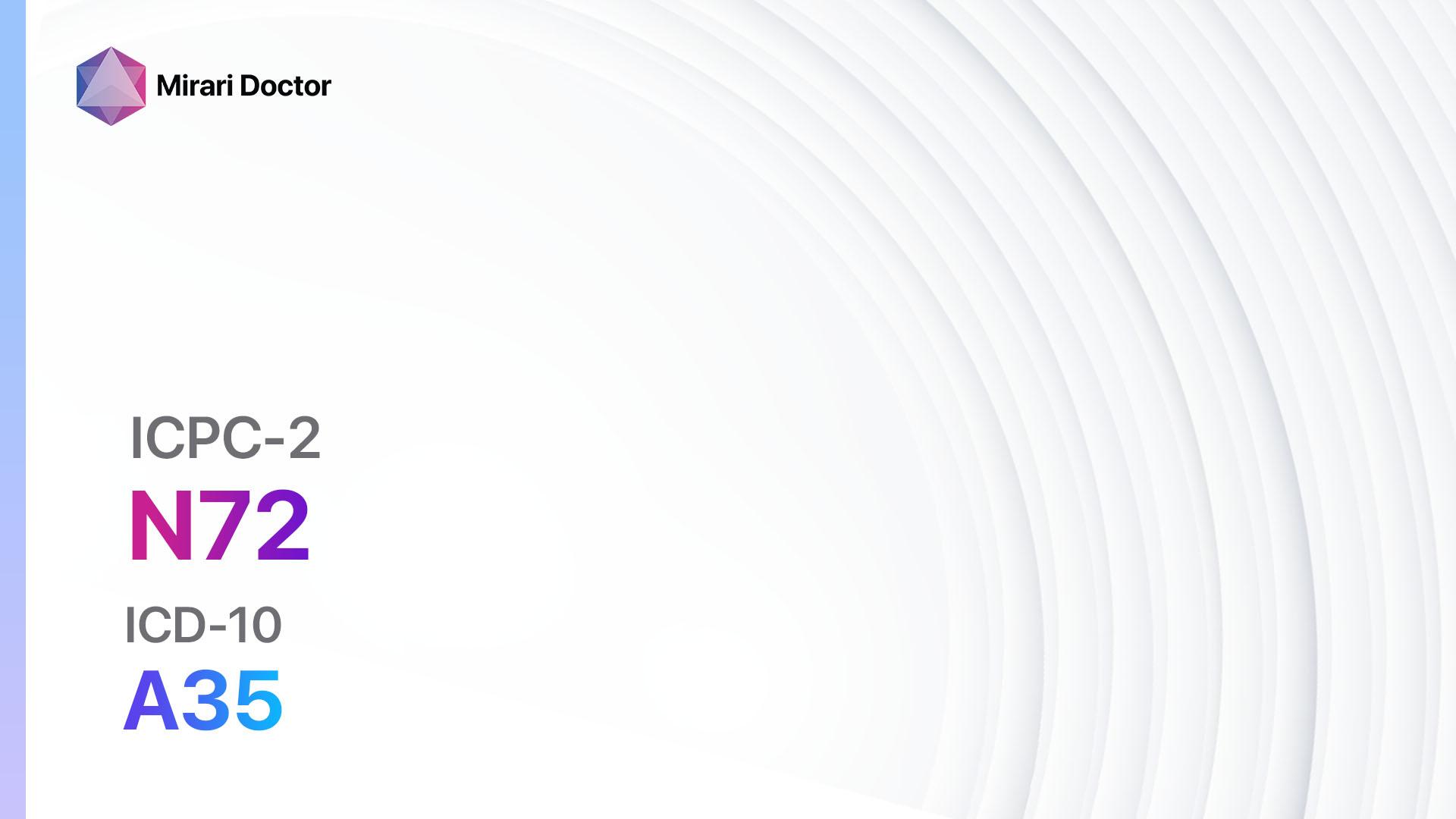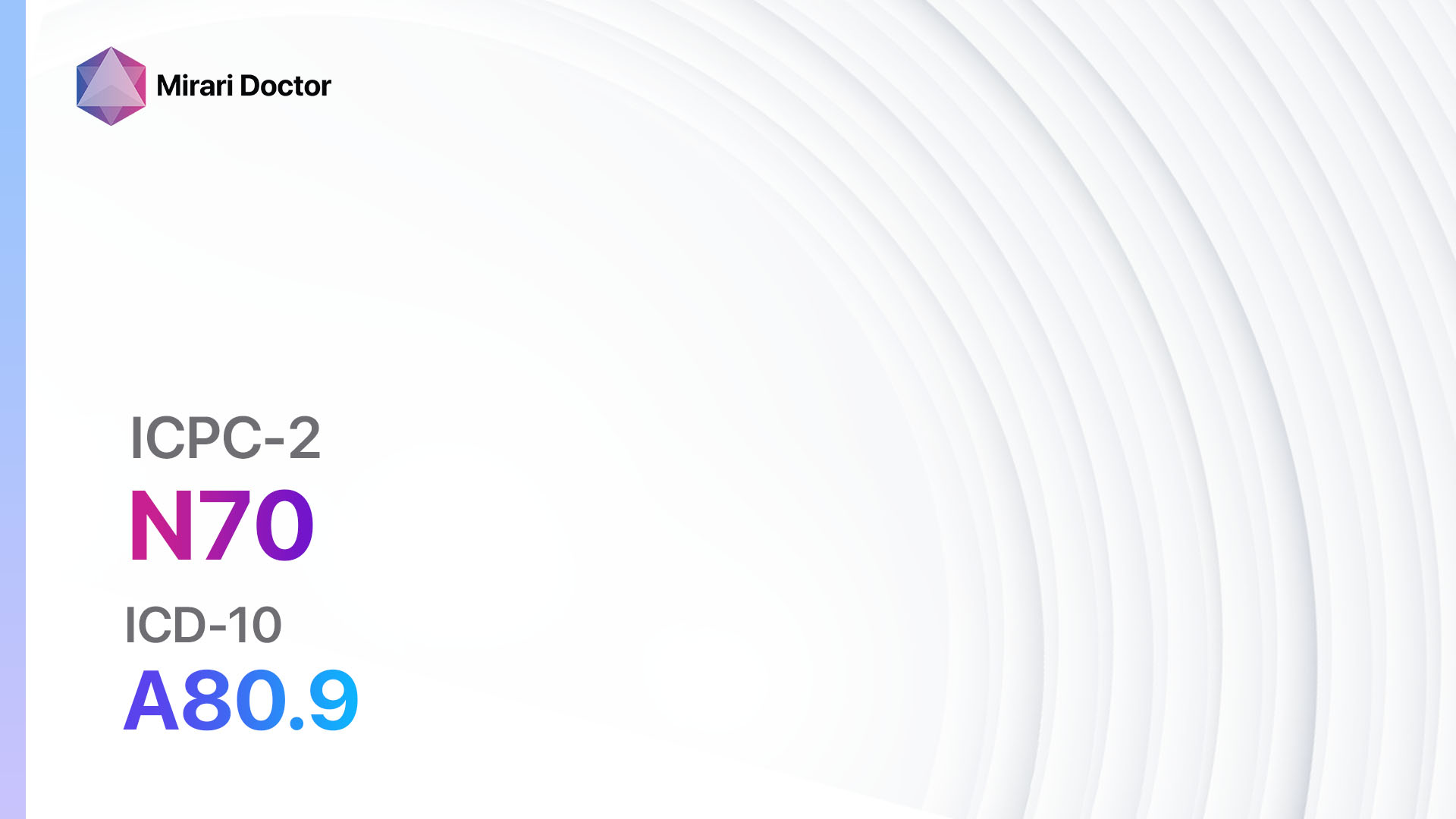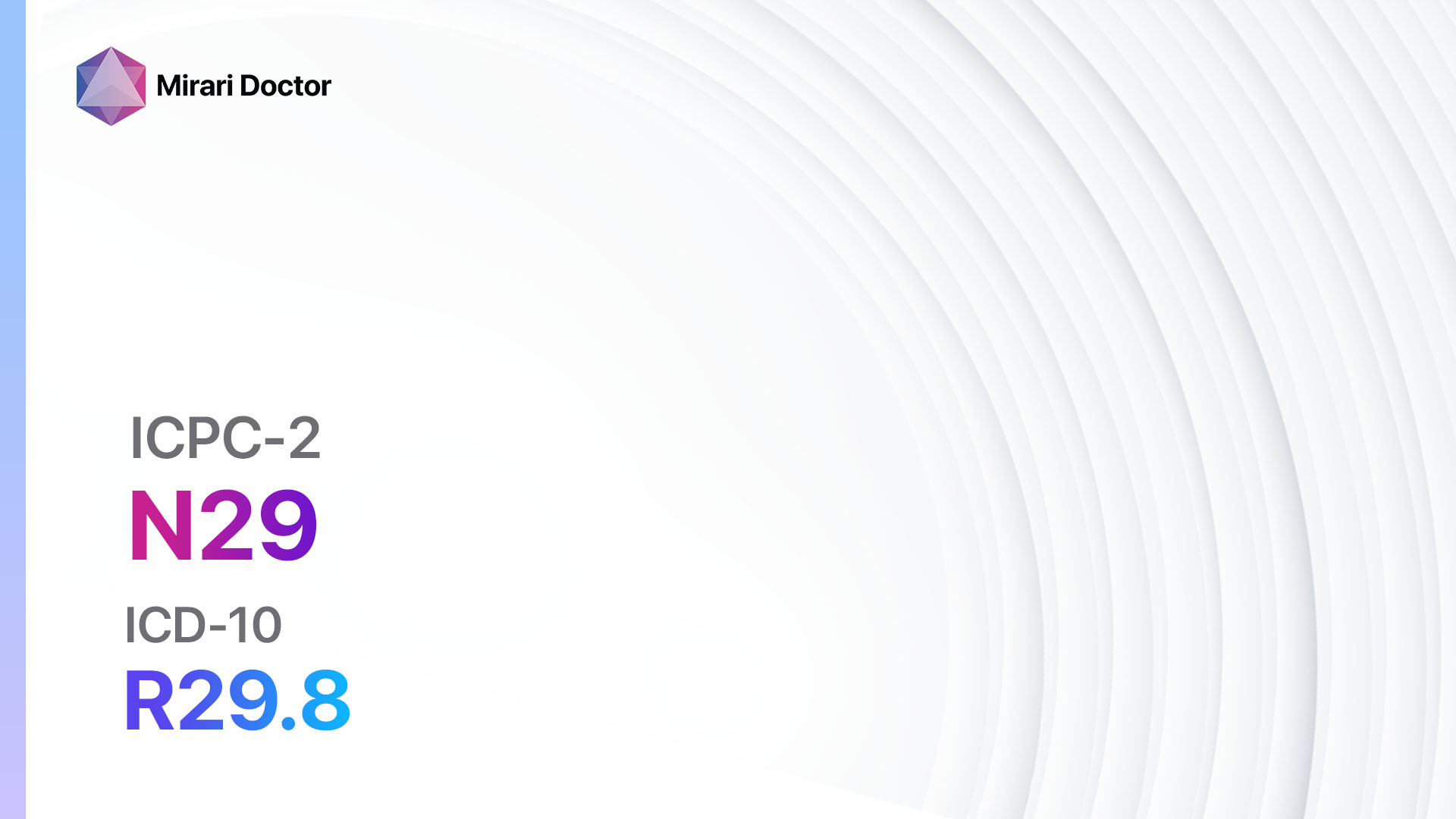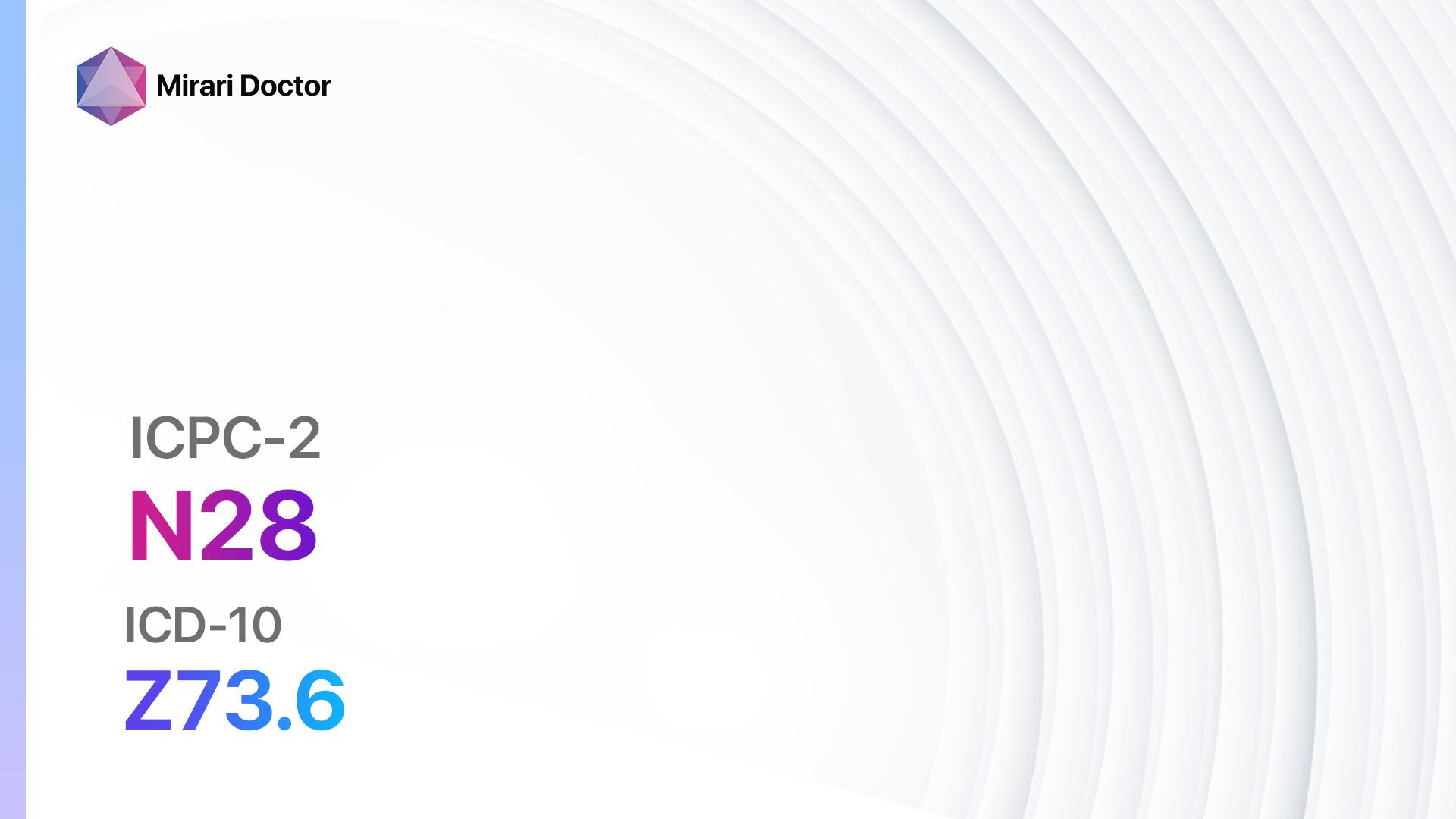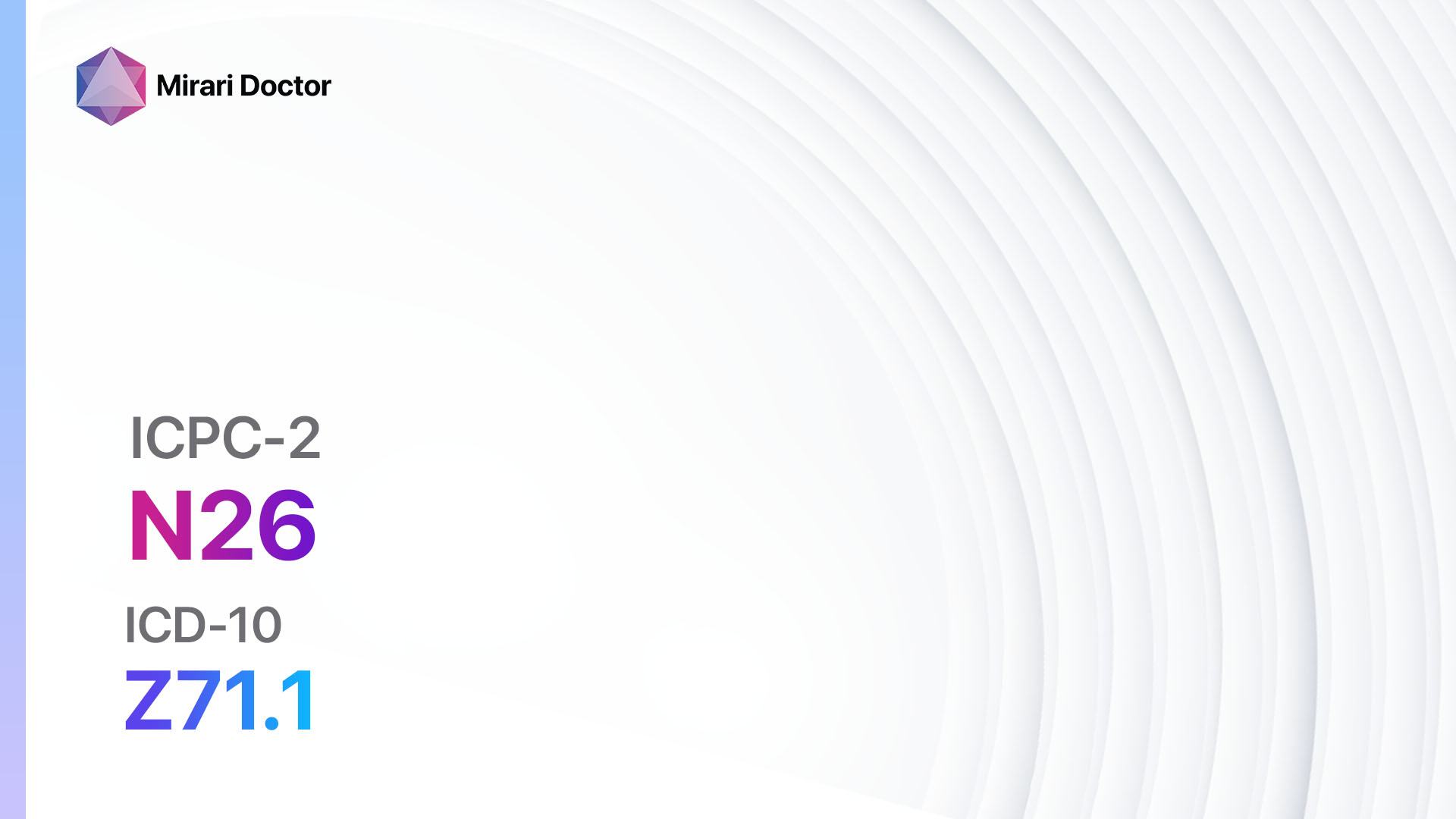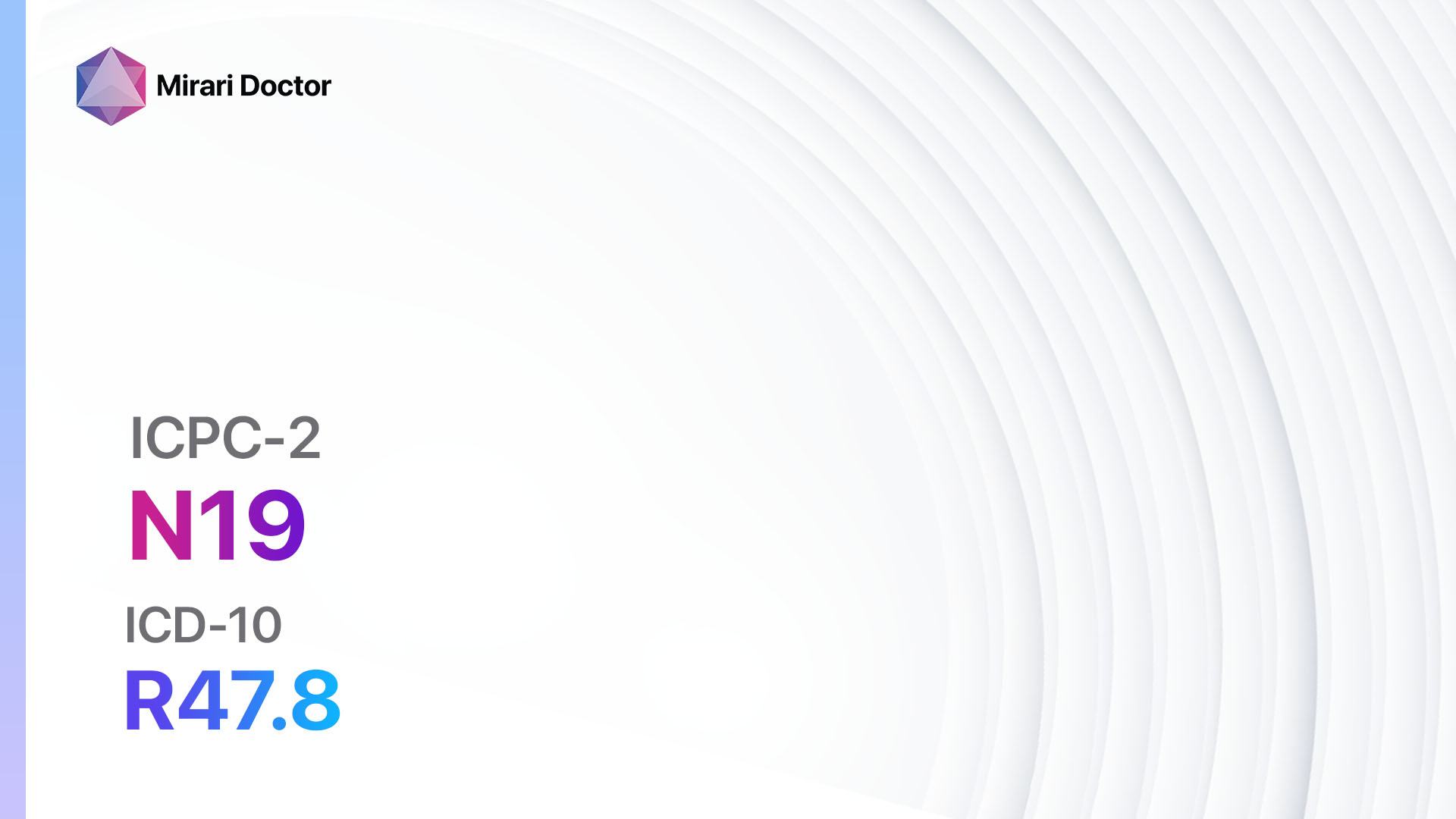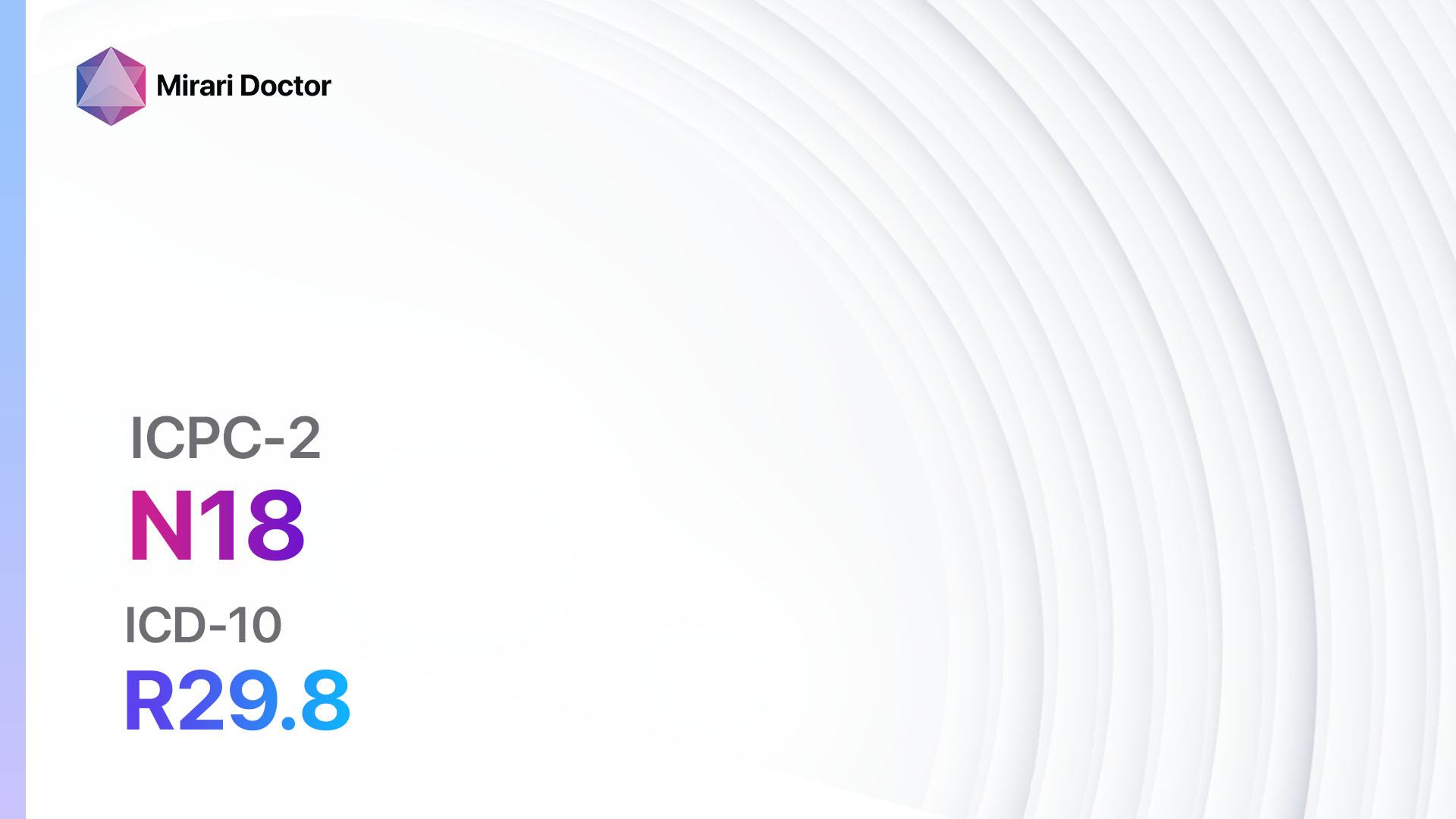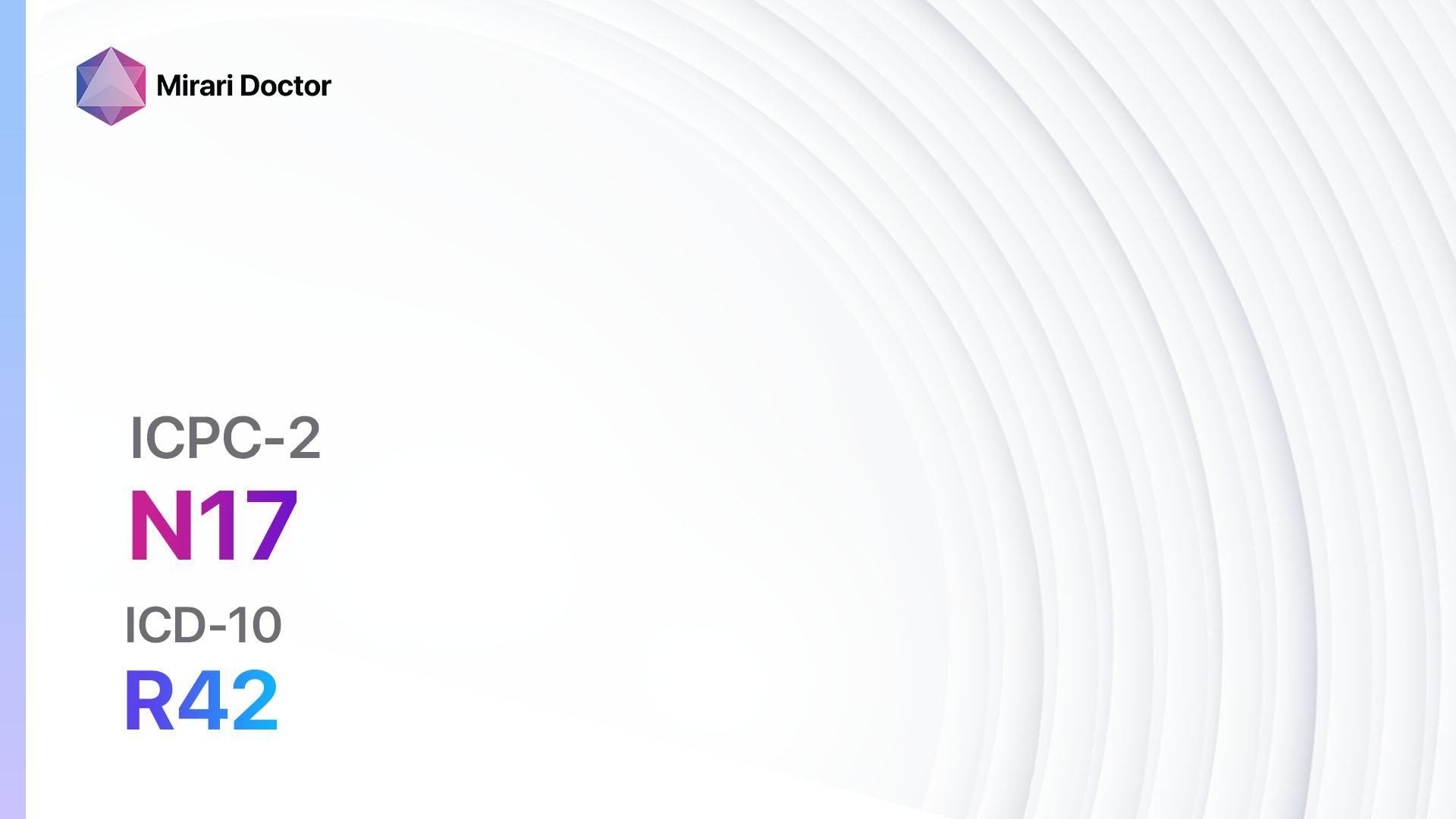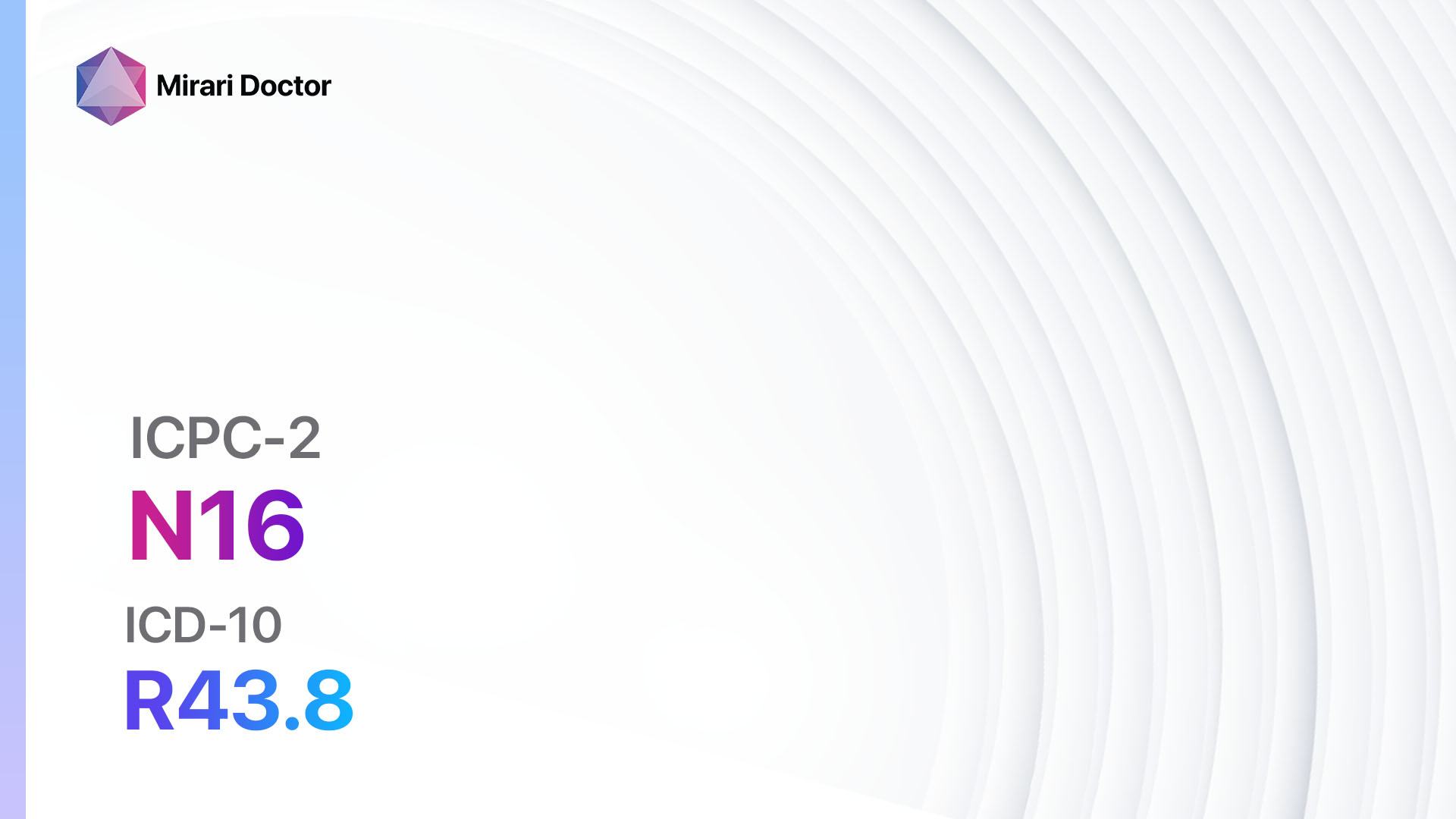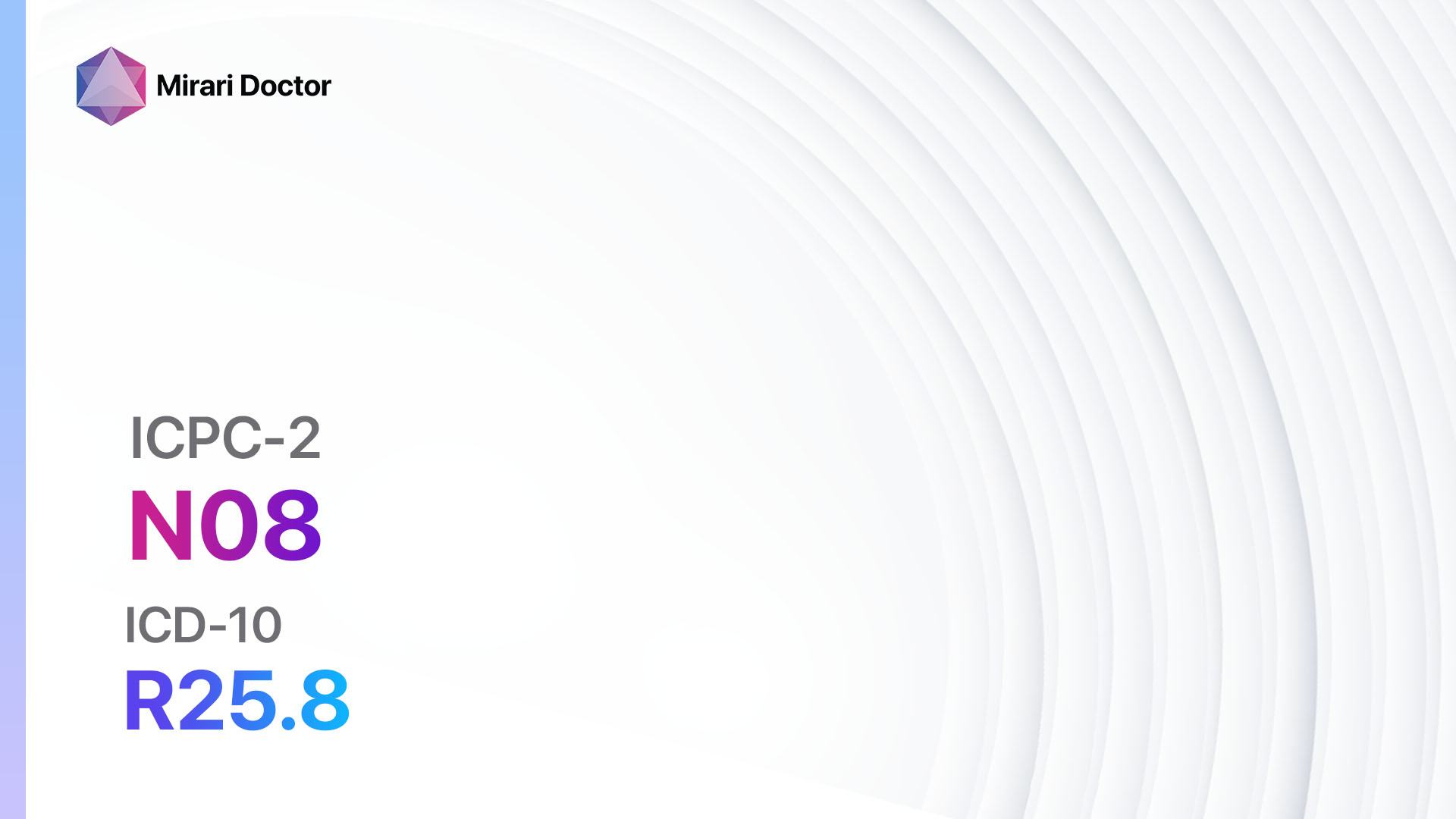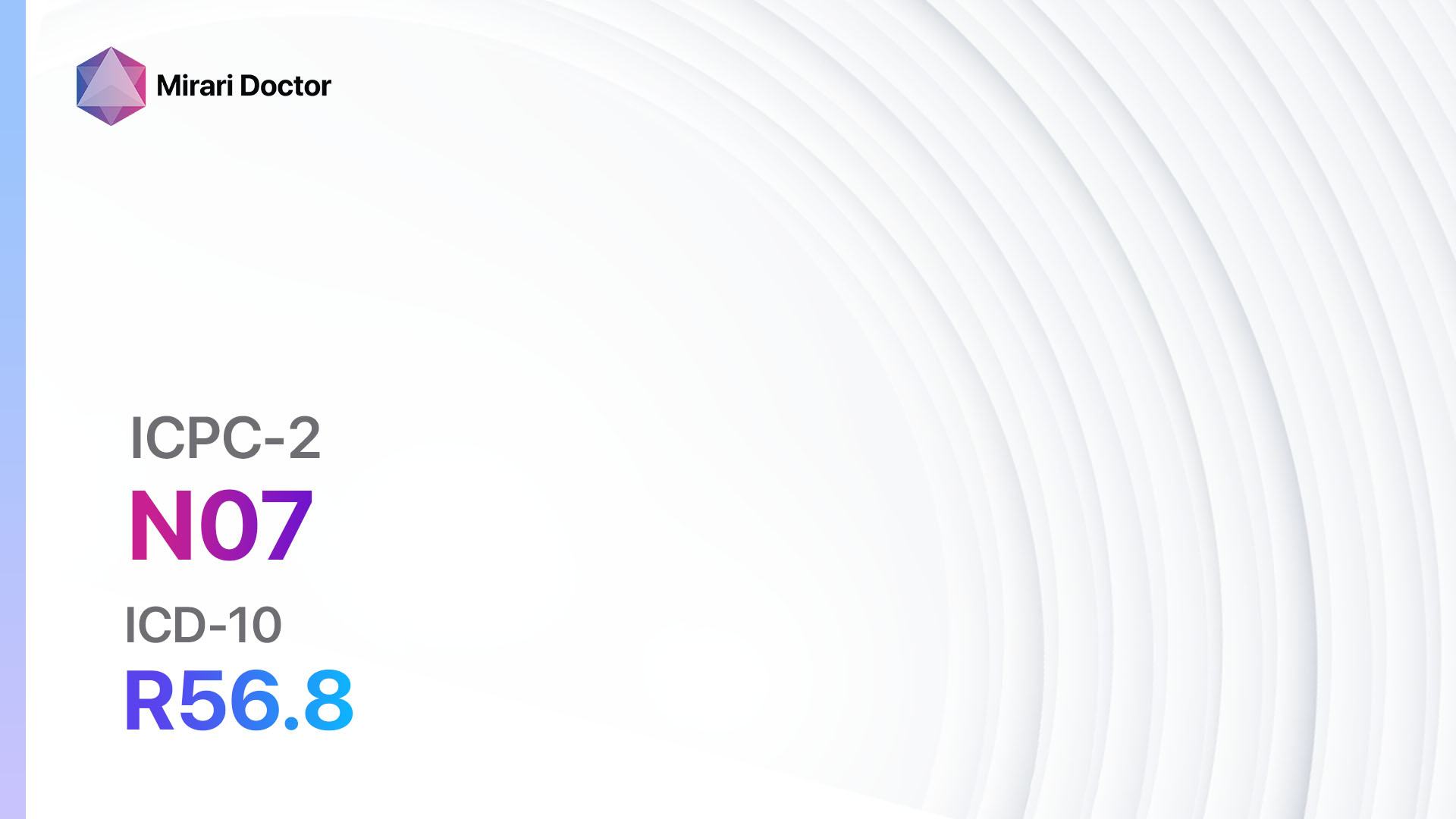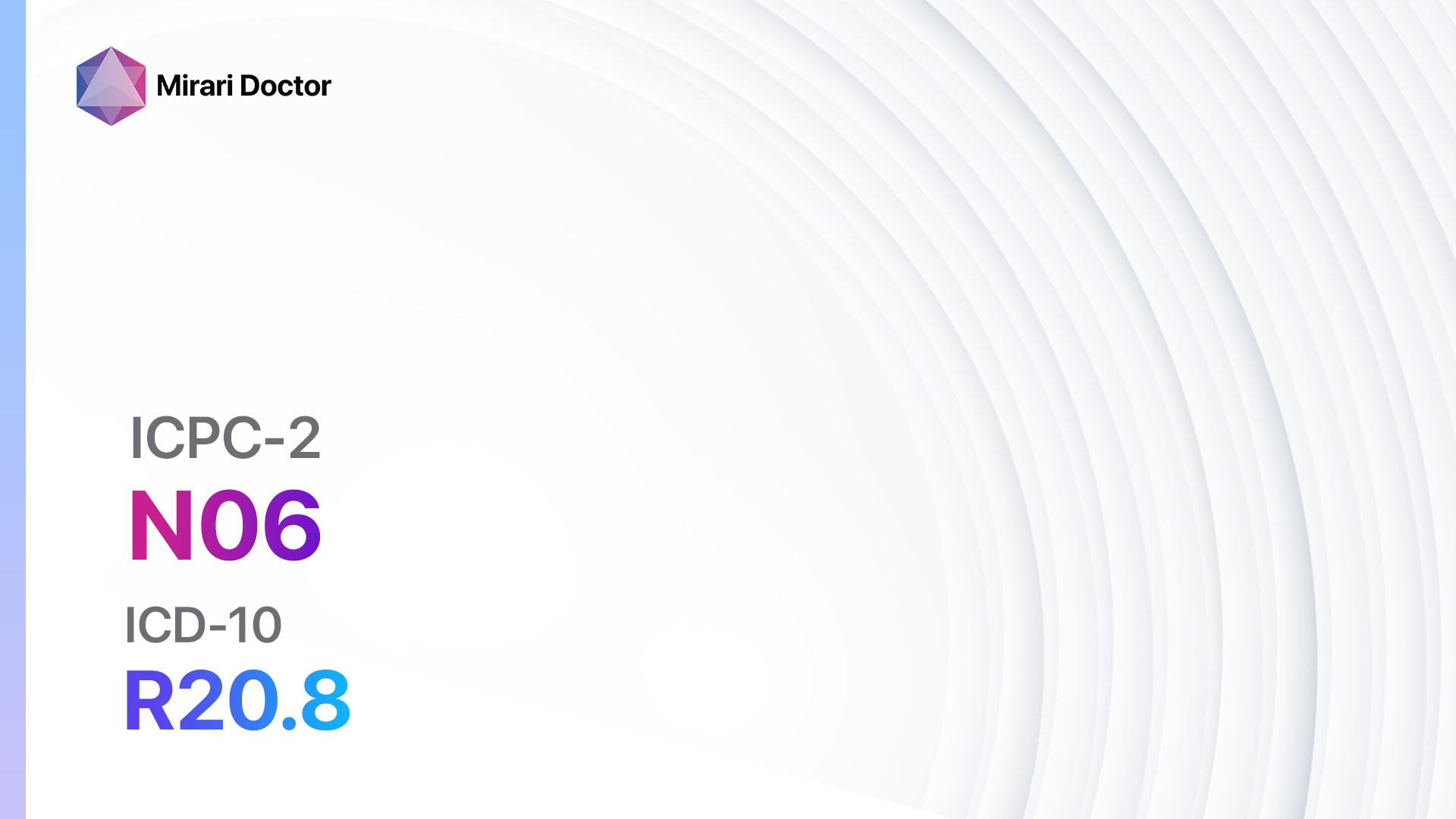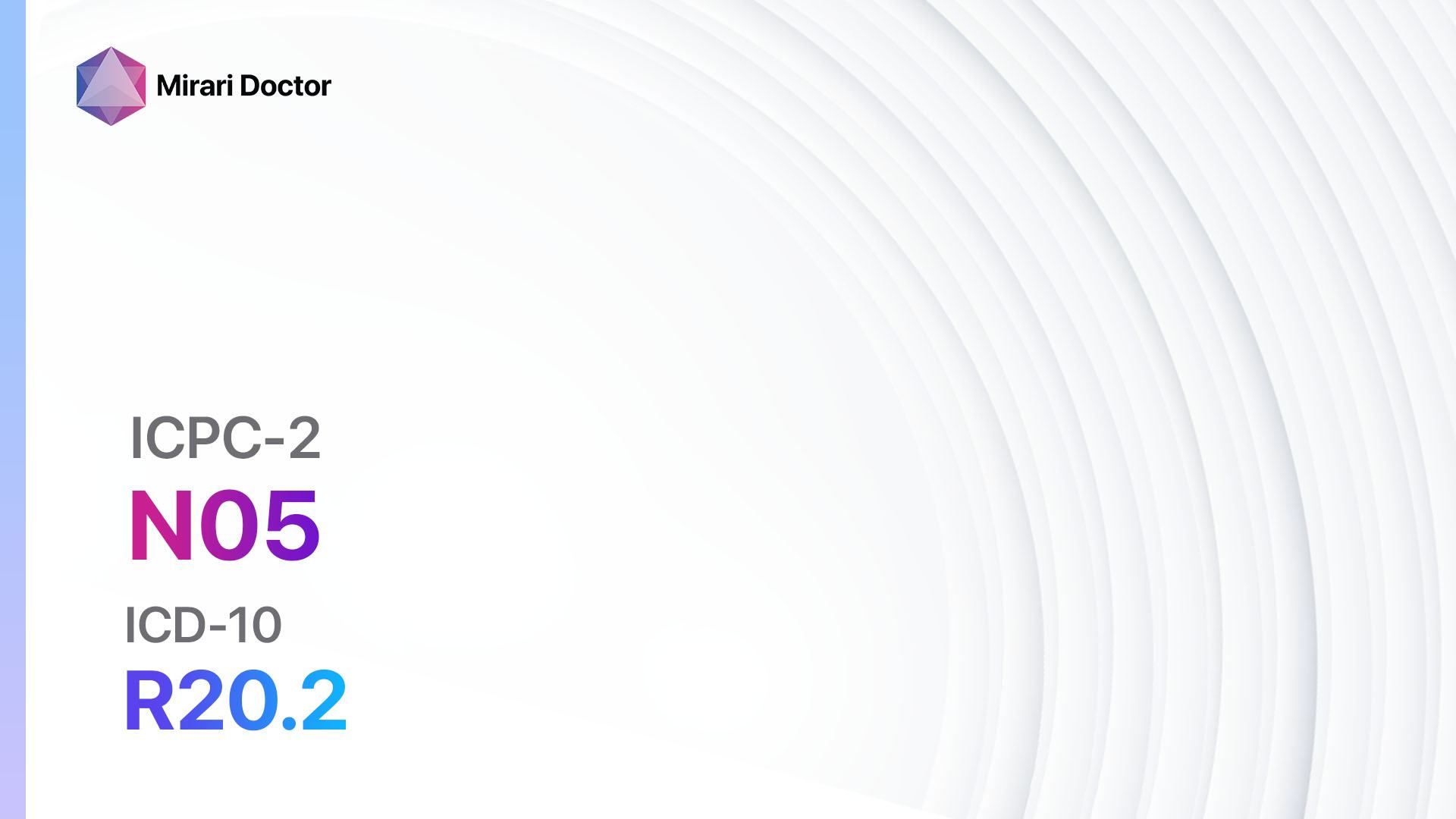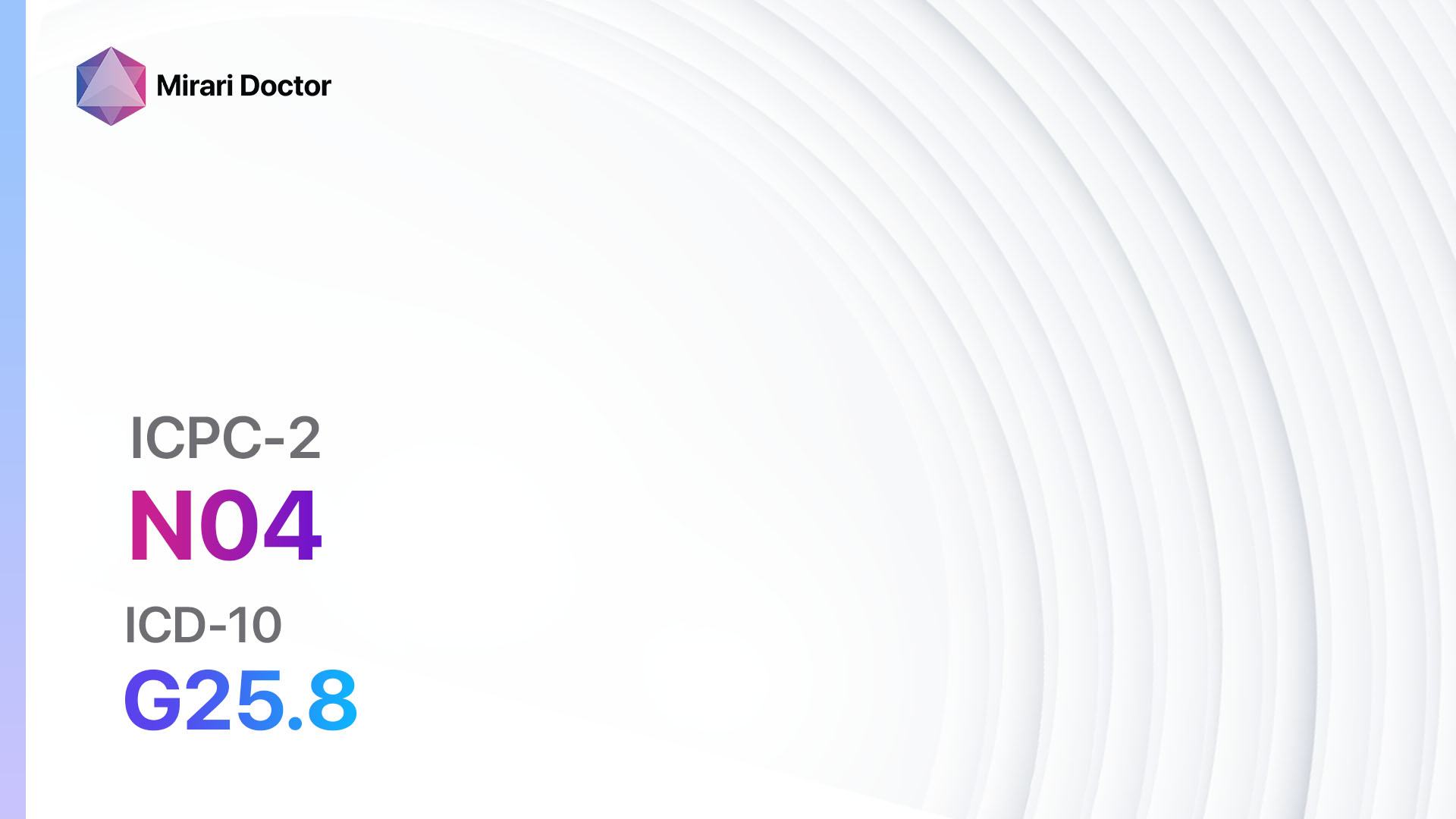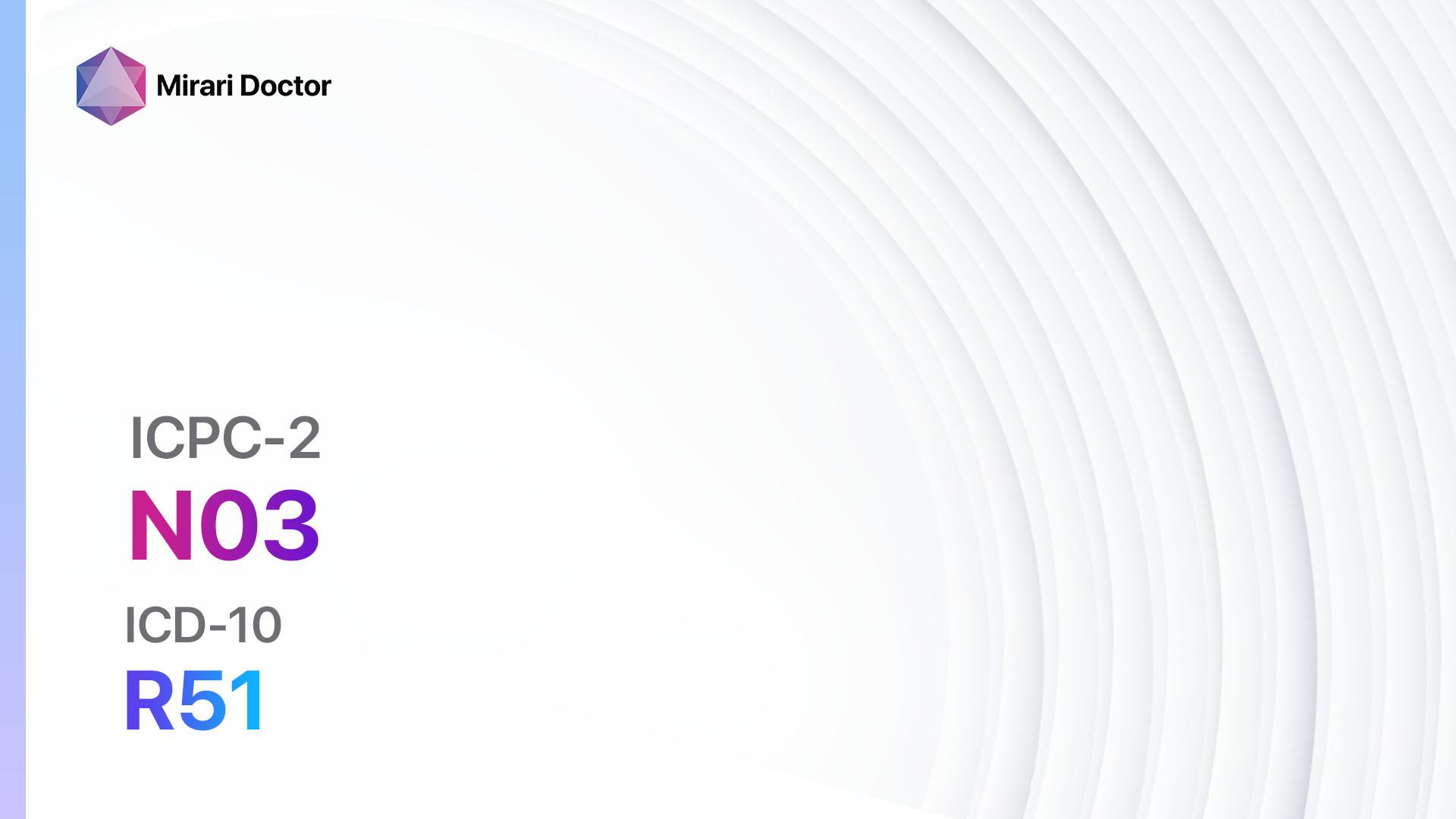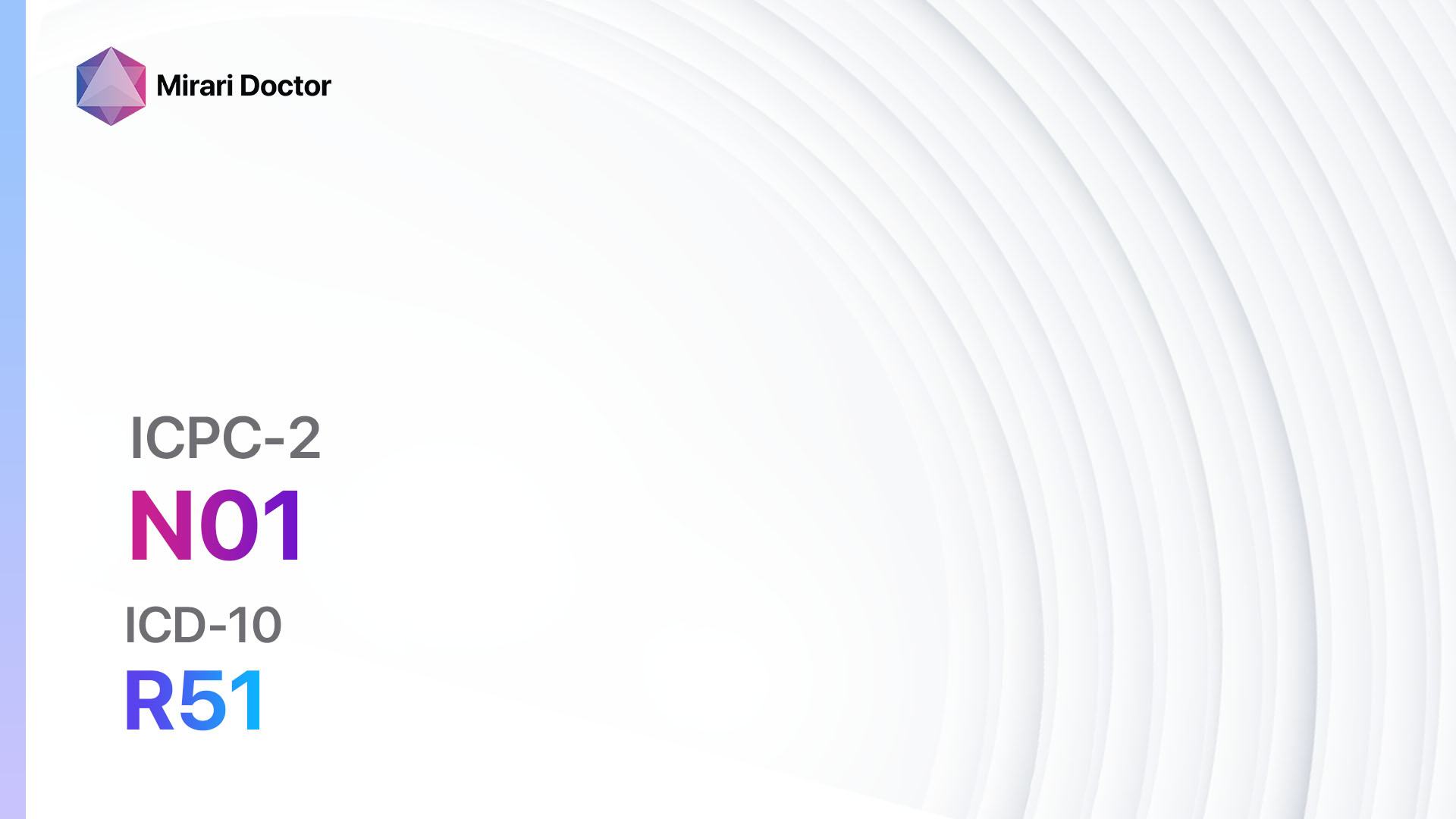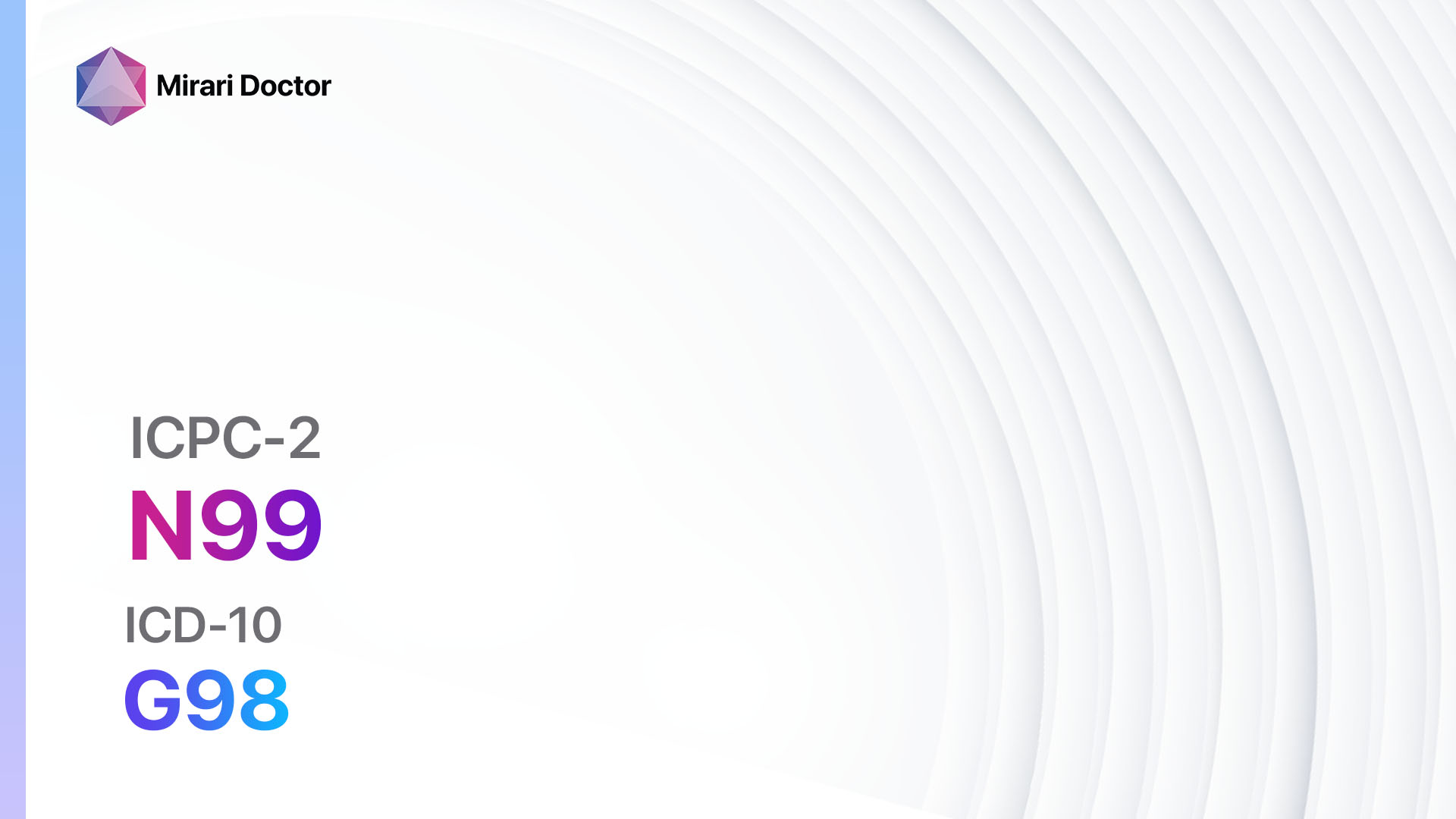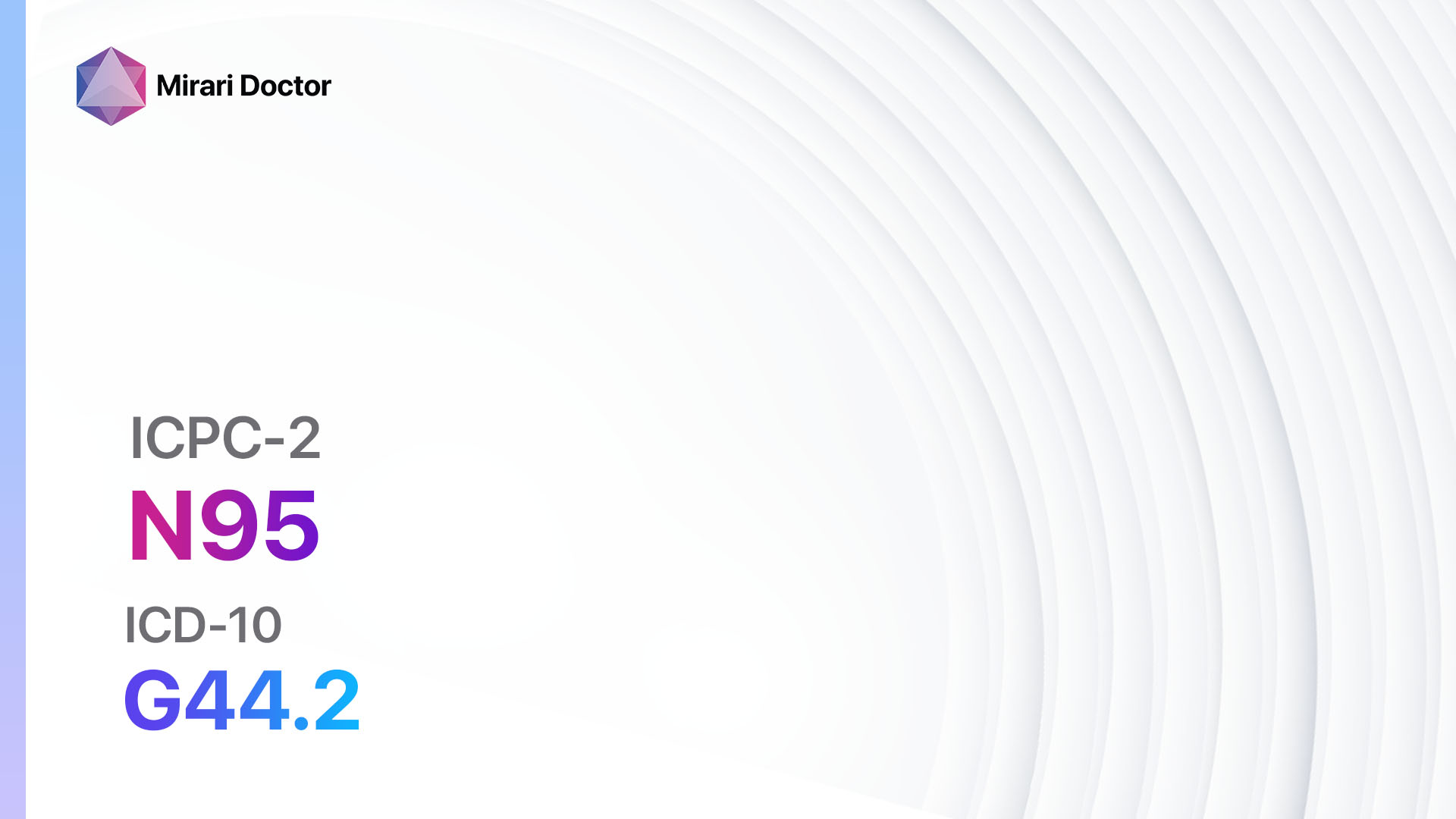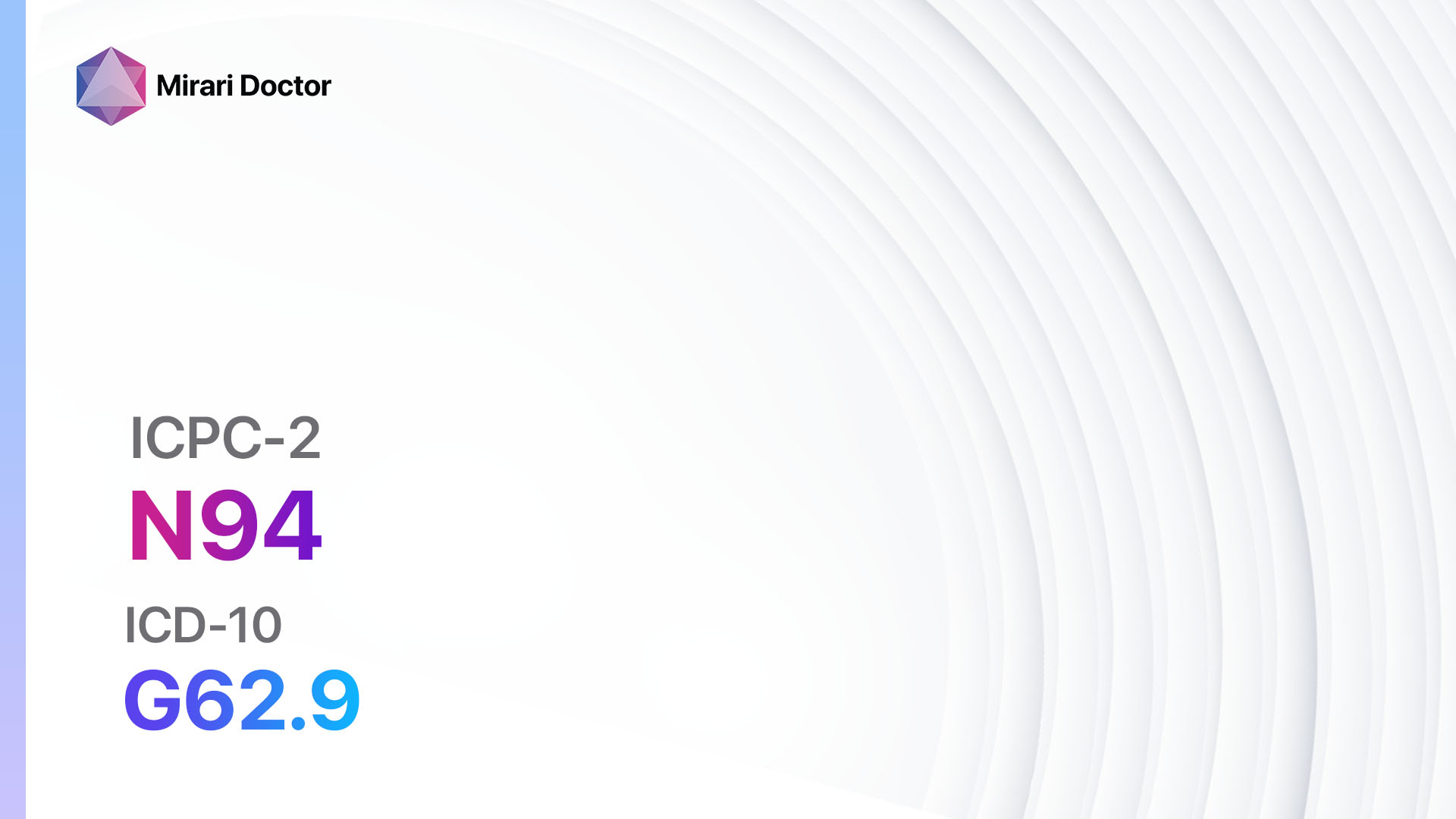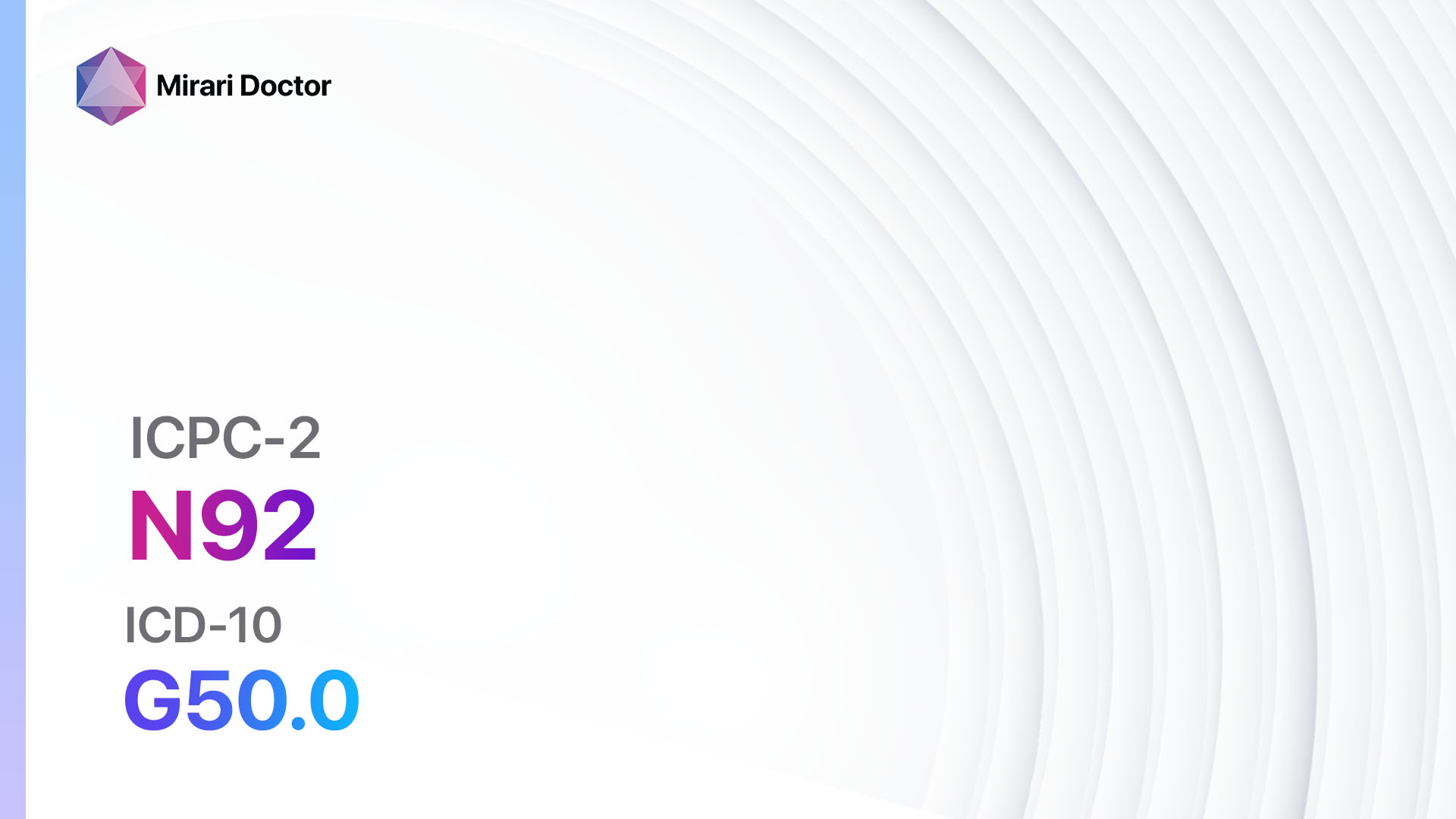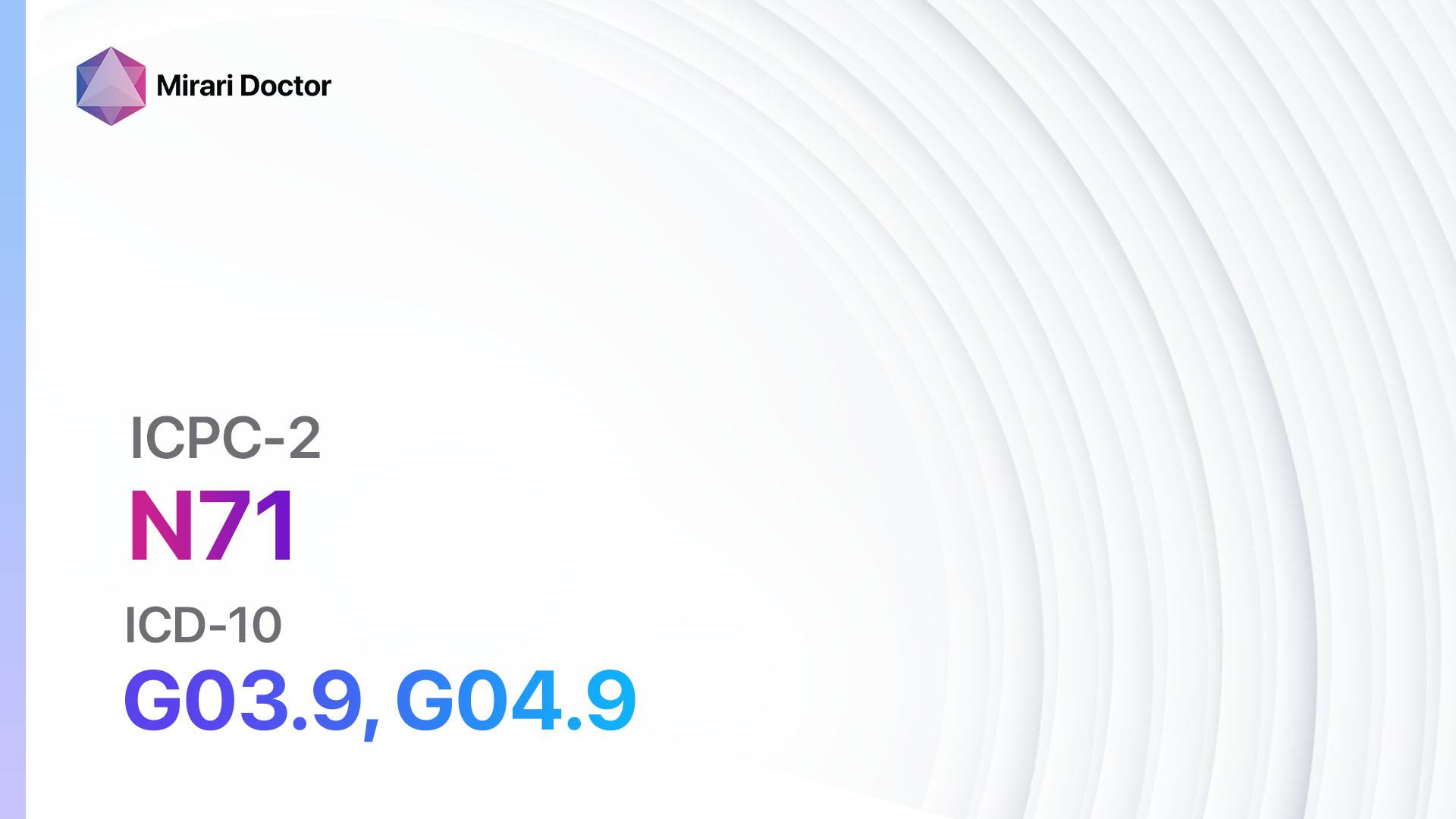
Introduction
Meningitis/encephalitis is a serious condition characterized by inflammation of the membranes surrounding the brain and spinal cord[1]. It can be caused by various infectious agents, such as bacteria, viruses, fungi, or parasites[2]. This guide aims to provide a comprehensive overview of the diagnostic steps and possible interventions for meningitis/encephalitis.
Codes
- ICPC-2 Code: N71 Meningitis/encephalitis[3]
- CD-10 Code: G03.9 Meningitis, unspecified, G04.9 Encephalitis, myelitis and encephalomyelitis, unspecified[4]
Symptoms
- Fever: High body temperature, often above 101°F (38.3°C)[5].
- Headache: Severe and persistent headache[5].
- Neck stiffness: Inability to touch the chin to the chest due to neck stiffness[5].
- Photophobia: Sensitivity to light[6].
- Altered mental status: Confusion, irritability, or changes in behavior[5].
- Nausea and vomiting: Feeling of nausea and vomiting[5].
- Seizures: Uncontrolled muscle movements or convulsions[6].
- Skin rash: Red or purple rash that does not fade when pressed[6].
Causes
- Bacterial meningitis: Caused by bacteria, such as Streptococcus pneumoniae, Neisseria meningitidis, or Haemophilus influenzae[7].
- Viral meningitis: Caused by viruses, such as enteroviruses, herpes simplex virus, or varicella-zoster virus[6].
- Fungal meningitis: Caused by fungi, such as Cryptococcus neoformans or Histoplasma capsulatum[10].
- Parasitic meningitis: Caused by parasites, such as Naegleria fowleri or Angiostrongylus cantonensis[10].
Diagnostic Steps
Medical History
- Obtain a detailed medical history, including recent illnesses, travel history, immunization status, and exposure to infectious agents[9].
- Ask about symptoms, such as fever, headache, neck stiffness, and altered mental status[9].
- Inquire about any underlying medical conditions or risk factors, such as immunodeficiency or recent neurosurgery[9].
Physical Examination
- Perform a thorough physical examination, including a neurological assessment[9].
- Look for signs of meningeal irritation, such as neck stiffness and Kernig’s or Brudzinski’s signs[9].
- Check for other physical findings, such as skin rash, focal neurological deficits, or signs of increased intracranial pressure[9].
Laboratory Tests
- Lumbar puncture: Collect cerebrospinal fluid (CSF) for analysis, including cell count, glucose, protein, and culture[9].
- Blood tests: Perform complete blood count (CBC), blood cultures, and inflammatory markers (e.g., C-reactive protein, erythrocyte sedimentation rate)[9].
- Polymerase chain reaction (PCR): Test CSF or blood for specific viral or bacterial DNA/RNA[9].
- Serology: Check for antibodies against specific infectious agents, such as herpes simplex virus or Borrelia burgdorferi[9].
- Imaging studies: Consider brain imaging (CT or MRI) to evaluate for complications or alternative diagnoses[9].
Follow-up and Patient Education
- Provide appropriate treatment based on the diagnosis.
- Educate the patient about the importance of completing the full course of antibiotics or antiviral medications.
- Advise the patient to seek immediate medical attention if symptoms worsen or new symptoms develop.
- Discuss the need for follow-up visits to monitor response to treatment and assess for any complications[10].
Possible Interventions
Traditional Interventions
Medications:
Top 5 drugs for Meningitis/encephalitis:
- Antibiotics (e.g., Ceftriaxone, Vancomycin):
- Cost: Varies depending on the specific antibiotic and dosage.
- Contraindications: Known hypersensitivity to the antibiotic.
- Side effects: Nausea, vomiting, diarrhea, allergic reactions.
- Severe side effects: Clostridium difficile infection, Stevens-Johnson syndrome.
- Drug interactions: None significant.
- Warning: Complete the full course of antibiotics as prescribed.
- Antiviral agents (e.g., Acyclovir, Ganciclovir):
- Cost: Varies depending on the specific antiviral and dosage.
- Contraindications: Known hypersensitivity to the antiviral.
- Side effects: Nausea, vomiting, diarrhea, headache.
- Severe side effects: Renal toxicity, bone marrow suppression.
- Drug interactions: None significant.
- Warning: Complete the full course of antiviral medication as prescribed.
- Antifungal agents (e.g., Amphotericin B, Fluconazole):
- Cost: Varies depending on the specific antifungal and dosage.
- Contraindications: Known hypersensitivity to the antifungal.
- Side effects: Nausea, vomiting, diarrhea, liver toxicity.
- Severe side effects: Renal toxicity, bone marrow suppression.
- Drug interactions: None significant.
- Warning: Complete the full course of antifungal medication as prescribed.
- Antiparasitic agents (e.g., Albendazole, Ivermectin):
- Cost: Varies depending on the specific antiparasitic and dosage.
- Contraindications: Known hypersensitivity to the antiparasitic.
- Side effects: Nausea, vomiting, diarrhea, dizziness.
- Severe side effects: Neurotoxicity, liver toxicity.
- Drug interactions: None significant.
- Warning: Complete the full course of antiparasitic medication as prescribed.
- Corticosteroids (e.g., Dexamethasone, Prednisone):
- Cost: Varies depending on the specific corticosteroid and dosage.
- Contraindications: Known hypersensitivity to corticosteroids, active infections.
- Side effects: Increased appetite, weight gain, mood changes.
- Severe side effects: Increased risk of infections, adrenal suppression.
- Drug interactions: None significant.
- Warning: Use corticosteroids cautiously and under medical supervision.
Alternative Drugs:
- Immunoglobulins: Intravenous immunoglobulins may be considered in certain cases, such as viral encephalitis.
- Anticonvulsants: Used to control seizures associated with encephalitis.
- Pain relievers: Nonsteroidal anti-inflammatory drugs (NSAIDs) or acetaminophen can help alleviate headache and fever.
Surgical Procedures:
- In some cases, surgical intervention may be necessary to drain abscesses or relieve increased intracranial pressure. The need for surgery will be determined on a case-by-case basis.
Alternative Interventions
- Acupuncture: May help alleviate symptoms and improve overall well-being. Cost: $60-$120 per session.
- Herbal supplements: Some herbs, such as Andrographis paniculata or Astragalus membranaceus, may have potential benefits for immune support. Cost: Varies depending on the specific supplement.
- Probiotics: Certain strains of probiotics may help support the immune system and reduce the risk of infections. Cost: Varies depending on the specific probiotic product.
- Nutritional supplements: Adequate nutrition, including vitamins and minerals, is important for overall health and immune function. Cost: Varies depending on the specific supplement.
Lifestyle Interventions
- Rest and hydration: Getting plenty of rest and staying hydrated can help support the body’s immune response. Cost: Minimal.
- Healthy diet: Consuming a balanced diet rich in fruits, vegetables, whole grains, and lean proteins can support overall health and immune function. Cost: Varies depending on food choices.
- Stress management: Engaging in stress-reducing activities, such as meditation, yoga, or deep breathing exercises, may help support the immune system. Cost: Minimal.
- Good hygiene practices: Practicing good hygiene, such as regular handwashing, can help reduce the risk of infections. Cost: Minimal.
It is important to note that the cost ranges provided are approximate and may vary depending on the location and availability of the interventions.
Mirari Cold Plasma Alternative Intervention
Understanding Mirari Cold Plasma
- Safe and Non-Invasive Treatment: Mirari Cold Plasma is a safe and non-invasive treatment option for various skin conditions. It does not require incisions, minimizing the risk of scarring, bleeding, or tissue damage.
- Efficient Extraction of Foreign Bodies: Mirari Cold Plasma facilitates the removal of foreign bodies from the skin by degrading and dissociating organic matter, allowing easier access and extraction.
- Pain Reduction and Comfort: Mirari Cold Plasma has a local analgesic effect, providing pain relief during the treatment, making it more comfortable for the patient.
- Reduced Risk of Infection: Mirari Cold Plasma has antimicrobial properties, effectively killing bacteria and reducing the risk of infection.
- Accelerated Healing and Minimal Scarring: Mirari Cold Plasma stimulates wound healing and tissue regeneration, reducing healing time and minimizing the formation of scars.
Mirari Cold Plasma Prescription
Video instructions for using Mirari Cold Plasma Device – N71 Meningitis/encephalitis (ICD-10:G03.9, G04.9)
| Mild | Moderate | Severe |
| Mode setting: 1 (Infection) Location: 7 (Neuro system & ENT) Morning: 15 minutes, Evening: 15 minutes |
Mode setting: 1 (Infection) Location: 7 (Neuro system & ENT) Morning: 30 minutes, Lunch: 30 minutes, Evening: 30 minutes |
Mode setting: 1 (Infection) Location: 7 (Neuro system & ENT) Morning: 30 minutes, Lunch: 30 minutes, Evening: 30 minutes |
| Mode setting: 2 (Wound Healing) Location: 7 (Neuro system & ENT) Morning: 15 minutes, Evening: 15 minutes |
Mode setting: 2 (Wound Healing) Location: 7 (Neuro system & ENT) Morning: 30 minutes, Lunch: 30 minutes, Evening: 30 minutes |
Mode setting: 2 (Wound Healing) Location: 7 (Neuro system & ENT) Morning: 30 minutes, Lunch: 30 minutes, Evening: 30 minutes |
| Mode setting: 7 (Immunotherapy) Location: 6 (Throat, Lymphatic & Thyroid) Morning: 15 minutes, Evening: 15 minutes |
Mode setting: 7 (Immunotherapy) Location: 6 (Throat, Lymphatic & Thyroid) Morning: 30 minutes, Lunch: 30 minutes, Evening: 30 minutes |
Mode setting: 7 (Immunotherapy) Location: 6 (Throat, Lymphatic & Thyroid) Morning: 30 minutes, Lunch: 30 minutes, Evening: 30 minutes |
| Mode setting: 7 (Immunotherapy) Location: 7 (Neuro system & ENT) Morning: 15 minutes, Evening: 15 minutes |
Mode setting: 7 (Immunotherapy) Location: 7 (Neuro system & ENT) Morning: 30 minutes, Lunch: 30 minutes, Evening: 30 minutes |
Mode setting: 7 (Immunotherapy) Location: 7 (Neuro system & ENT) Morning: 30 minutes, Lunch: 30 minutes, Evening: 30 minutes |
| Total Morning: 60 minutes approx. $10 USD, Evening: 60 minutes approx. $10 USD |
Total Morning: 120 minutes approx. $20 USD, Lunch: 120 minutes approx. $20 USD, Evening: 120 minutes approx. $20 USD, |
Total Morning: 120 minutes approx. $20 USD, Lunch: 120 minutes approx. $20 USD, Evening: 120 minutes approx. $20 USD, |
| Usual treatment for 7-60 days approx. $140 USD – $1200 USD | Usual treatment for 6-8 weeks approx. $2,520 USD – $3,360 USD |
Usual treatment for 3-6 months approx. $5,400 USD – $10,800 USD
|
 |
|
Use the Mirari Cold Plasma device to treat Meningitis/encephalitis effectively.
WARNING: MIRARI COLD PLASMA IS DESIGNED FOR THE HUMAN BODY WITHOUT ANY ARTIFICIAL OR THIRD PARTY PRODUCTS. USE OF OTHER PRODUCTS IN COMBINATION WITH MIRARI COLD PLASMA MAY CAUSE UNPREDICTABLE EFFECTS, HARM OR INJURY. PLEASE CONSULT A MEDICAL PROFESSIONAL BEFORE COMBINING ANY OTHER PRODUCTS WITH USE OF MIRARI.
Step 1: Cleanse the Skin
- Start by cleaning the affected area of the skin with a gentle cleanser or mild soap and water. Gently pat the area dry with a clean towel.
Step 2: Prepare the Mirari Cold Plasma device
- Ensure that the Mirari Cold Plasma device is fully charged or has fresh batteries as per the manufacturer’s instructions. Make sure the device is clean and in good working condition.
- Switch on the Mirari device using the power button or by following the specific instructions provided with the device.
- Some Mirari devices may have adjustable settings for intensity or treatment duration. Follow the manufacturer’s instructions to select the appropriate settings based on your needs and the recommended guidelines.
Step 3: Apply the Device
- Place the Mirari device in direct contact with the affected area of the skin. Gently glide or hold the device over the skin surface, ensuring even coverage of the area experiencing.
- Slowly move the Mirari device in a circular motion or follow a specific pattern as indicated in the user manual. This helps ensure thorough treatment coverage.
Step 4: Monitor and Assess:
- Keep track of your progress and evaluate the effectiveness of the Mirari device in managing your Meningitis/encephalitis. If you have any concerns or notice any adverse reactions, consult with your health care professional.
Note
This guide is for informational purposes only and should not replace the advice of a medical professional. Always consult with your healthcare provider or a qualified medical professional for personal advice, diagnosis, or treatment. Do not solely rely on the information presented here for decisions about your health. Use of this information is at your own risk. The authors of this guide, nor any associated entities or platforms, are not responsible for any potential adverse effects or outcomes based on the content.
Mirari Cold Plasma System Disclaimer
- Purpose: The Mirari Cold Plasma System is a Class 2 medical device designed for use by trained healthcare professionals. It is registered for use in Thailand and Vietnam. It is not intended for use outside of these locations.
- Informational Use: The content and information provided with the device are for educational and informational purposes only. They are not a substitute for professional medical advice or care.
- Variable Outcomes: While the device is approved for specific uses, individual outcomes can differ. We do not assert or guarantee specific medical outcomes.
- Consultation: Prior to utilizing the device or making decisions based on its content, it is essential to consult with a Certified Mirari Tele-Therapist and your medical healthcare provider regarding specific protocols.
- Liability: By using this device, users are acknowledging and accepting all potential risks. Neither the manufacturer nor the distributor will be held accountable for any adverse reactions, injuries, or damages stemming from its use.
- Geographical Availability: This device has received approval for designated purposes by the Thai and Vietnam FDA. As of now, outside of Thailand and Vietnam, the Mirari Cold Plasma System is not available for purchase or use.
References
-
- Meningitis and Encephalitis – BrainFacts. (n.d.). Retrieved from https://www.brainfacts.org/diseases-and-disorders/neurological-disorders-az/diseases-a-to-z-from-ninds/meningitis-and-encephalitis
- Meningitis – World Health Organization (WHO). (2023, April 17). Retrieved from https://www.who.int/news-room/fact-sheets/detail/meningitis
- ICPC-2 Codes – RxReasoner. (n.d.). Retrieved from https://www.rxreasoner.com/icpc2codes/component/I
- G04.9 Encephalitis, myelitis and encephalomyelitis, unspecified. (n.d.). Retrieved from https://gesund.bund.de/en/icd-code-search/g04-9
- Meningitis – Symptoms and causes – Mayo Clinic. (2023, October 4). Retrieved from https://www.mayoclinic.org/diseases-conditions/meningitis/symptoms-causes/syc-20350508
- Encephalitis vs Meningitis – Healthline. (2021, April 21). Retrieved from https://www.healthline.com/health/infection/encephalitis-vs-meningitis
- Bacterial Meningitis – StatPearls – NCBI Bookshelf. (n.d.). Retrieved from https://www.ncbi.nlm.nih.gov/books/NBK470351/
- Introduction to Meningitis – Brain, Spinal Cord, and Nerve Disorders. (n.d.). Retrieved from https://www.msdmanuals.com/home/brain,-spinal-cord,-and-nerve-disorders/meningitis/introduction-to-meningitis
- Meningitis – Wikipedia. (n.d.). Retrieved from https://en.wikipedia.org/wiki/Meningitis
- Meningoencephalitis: What It Is, Symptoms & Treatment. (2023, July 25). Retrieved from https://my.clevelandclinic.org/health/diseases/25157-meningoencephalitis
Related articles
Made in USA


